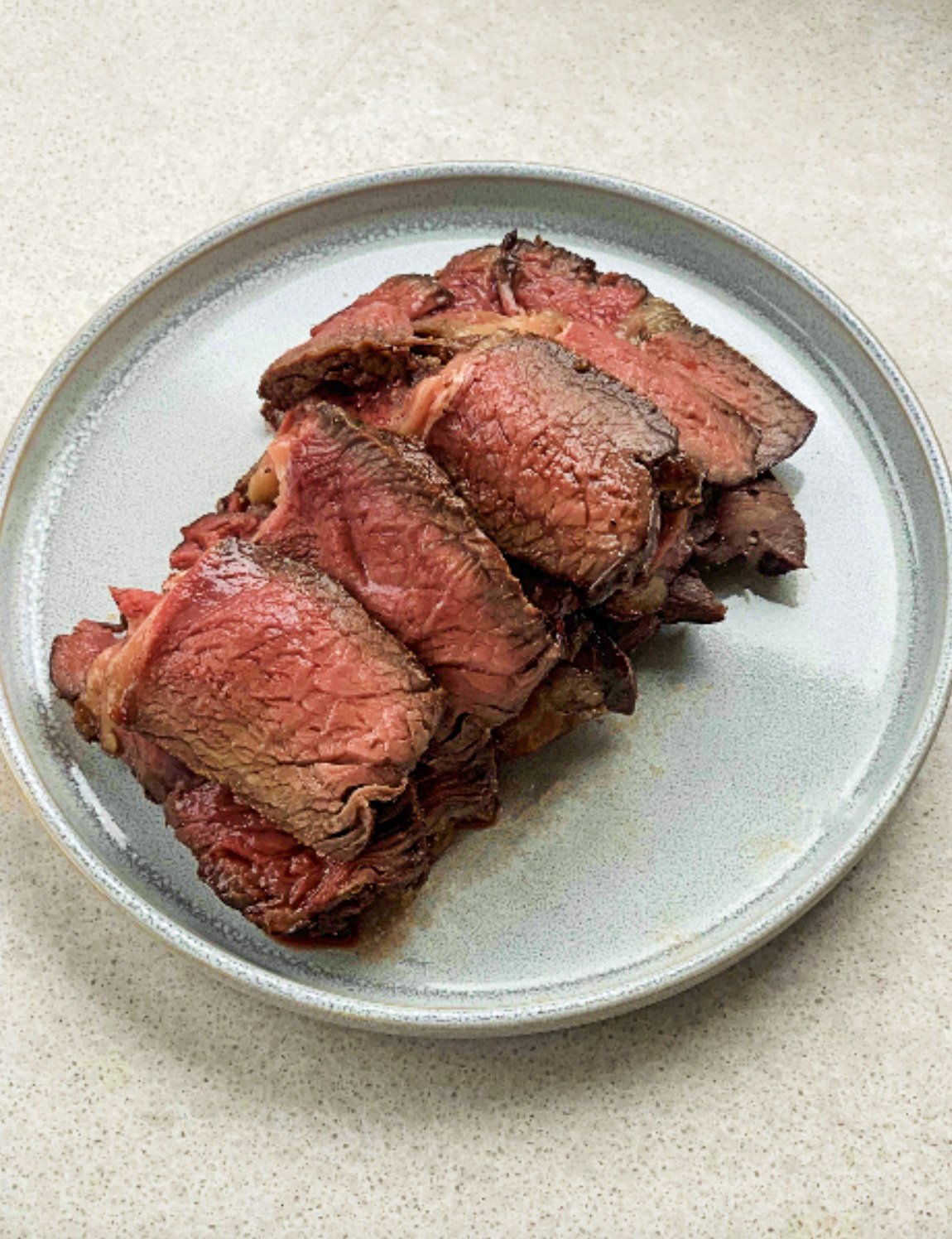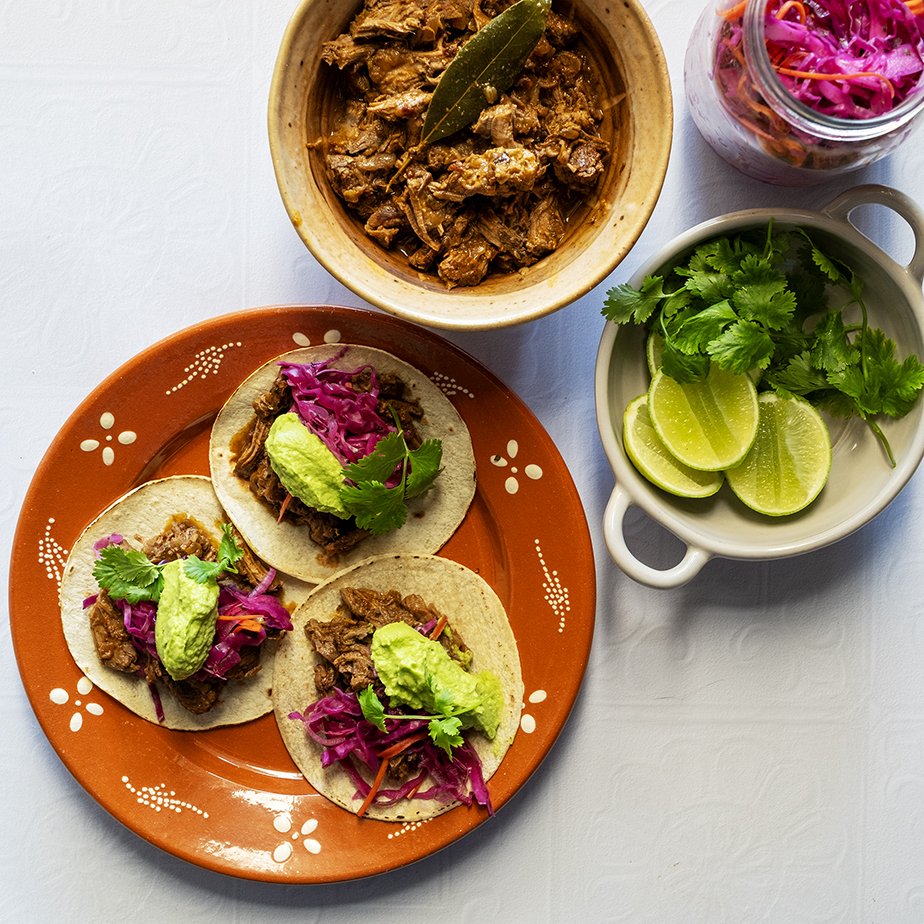Osso buco with white beans, figs and cinnamon
Osso buco is a cut of veal and a traditional Lombardian meat stew; the word means ‘bone with a hole.’ The osso buco we usually see is beef and not veal, which is significantly more expensive, milder-tasting and daintier in size than beef osso buco. Which can be humungous. A round, crosswise cut of the shank, osso buco makes a mighty tasty braise; in the original dish, called Osso Buco alla Milanese, the meat is braised in a white wine and stock mixture, sprinkled with gremolata (a mix of chopped parsley, lemon zest and garlic) on the plate, then served with mash or polenta. You can’t cook this cut any other way besides braising as it’s too tough to fry, grill or roast, requiring long, slow simmering in liquid to tenderise all the lovely connective tissues. If you’re timid of cooking meat on the bone, then osso buco is a great place to start as there’s not too much of it (bone, that is). The meat doesn’t require heavy trimming or dicing (it’s best cooked whole), and the bone contains marrow, a rich, tasty substance that’s considered a treat. If the marrow doesn’t melt into the braising liquid, you scoop it up and savour the glorious, gloopy texture and amazing flavour. It’s highly nutritious; remember the ‘bone broth’ fad? The bones of choice were marrow bones, because marrow contains myriad vitamins, minerals and other good suff, such as collagen. So have at it!
SERVES 6
195g (1 cup) dried cannellini beans, soaked overnight
3 tbsp olive oil
1.5kg osso buco (about 6 pieces)
1 large onion, finely chopped
4 garlic cloves, finely grated or chopped
2 stalks rosemary
1 cinnamon stick
2 dried bayleaves
3 tbsp tomato paste
250ml (1 cup) red wine
750ml (3 cup) beef stock, approximately
200g dried figs
polenta or potato mash, to serve
Drain the beans, then place them in a saucepan and cover with plenty of cold water. Bring to a simmer, skimming off the foam that rises to the surface, then cook for 50-60 minutes until the beans are tender. Drain well.
Meanwhile, heat half the olive oil in a large saucepan over medium heat. Add the onion, garlic, rosemary, cinnamon and bay leaves, then cook, stirring often, for about 8 minutes or until the onions are very soft. Add the tomato paste, then cook, stirring, for 1 minute. Remove the pan from the heat.
While the vegetables cook, heat the remaining oil in a large, heavy-based frying pan over medium-high heat. Working in batches and adding more oil if needed, add the osso buco, season with salt, then cook for 3-4 minutes on each side or until well browned. Remove to a plate while the remaining osso buco browns. When the meat has browned, add the red wine to the pan and bring to a simmer, stirring to dislodge any stuck-on bits from the base. Add the wine mixture to the saucepan with the vegetables with the osso buco and stock; you might need a little more stock if the beef is not quite covered (it should be only just covered). Bring to a simmer, then reduce the heat to low. Cook, covered, for 1 hour; the beef will not be completely tender at this stage.
While the beef is cooking, pour boiling water over the figs in a bowl, then stand for 10-15 minutes to soften. After the beef has been cooking for 1 hour, drain the figs, then add them to the beef with the cooked beans. Cook the braise for another 30-40 minutes or until the meat is very tender and nearly falling off the bone. Using tongs, carefully remove the osso buco to a bowl, then skim any fat from the surface of the cooking liquid. Bring the liquid to a boil over high heat, then reduce the heat to medium-high and simmer for 15 minutes or until it has reduced and thickened to form a light sauce. Return the beef to the pan to heat through. Taste, then season the sauce with salt and pepper. Serve the braise with polenta or potato mash.










